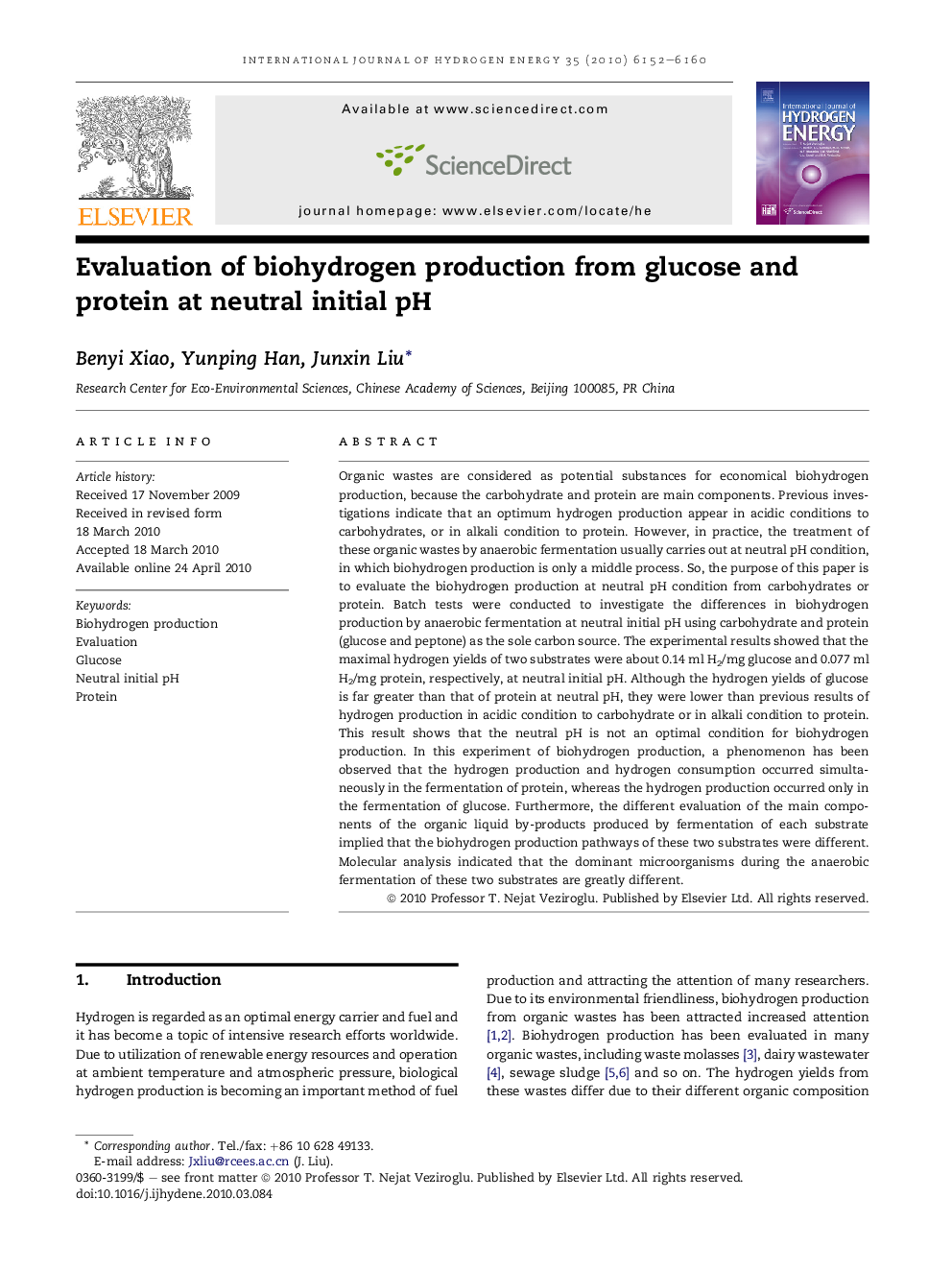| Article ID | Journal | Published Year | Pages | File Type |
|---|---|---|---|---|
| 1277076 | International Journal of Hydrogen Energy | 2010 | 9 Pages |
Organic wastes are considered as potential substances for economical biohydrogen production, because the carbohydrate and protein are main components. Previous investigations indicate that an optimum hydrogen production appear in acidic conditions to carbohydrates, or in alkali condition to protein. However, in practice, the treatment of these organic wastes by anaerobic fermentation usually carries out at neutral pH condition, in which biohydrogen production is only a middle process. So, the purpose of this paper is to evaluate the biohydrogen production at neutral pH condition from carbohydrates or protein. Batch tests were conducted to investigate the differences in biohydrogen production by anaerobic fermentation at neutral initial pH using carbohydrate and protein (glucose and peptone) as the sole carbon source. The experimental results showed that the maximal hydrogen yields of two substrates were about 0.14 ml H2/mg glucose and 0.077 ml H2/mg protein, respectively, at neutral initial pH. Although the hydrogen yields of glucose is far greater than that of protein at neutral pH, they were lower than previous results of hydrogen production in acidic condition to carbohydrate or in alkali condition to protein. This result shows that the neutral pH is not an optimal condition for biohydrogen production. In this experiment of biohydrogen production, a phenomenon has been observed that the hydrogen production and hydrogen consumption occurred simultaneously in the fermentation of protein, whereas the hydrogen production occurred only in the fermentation of glucose. Furthermore, the different evaluation of the main components of the organic liquid by-products produced by fermentation of each substrate implied that the biohydrogen production pathways of these two substrates were different. Molecular analysis indicated that the dominant microorganisms during the anaerobic fermentation of these two substrates are greatly different.
